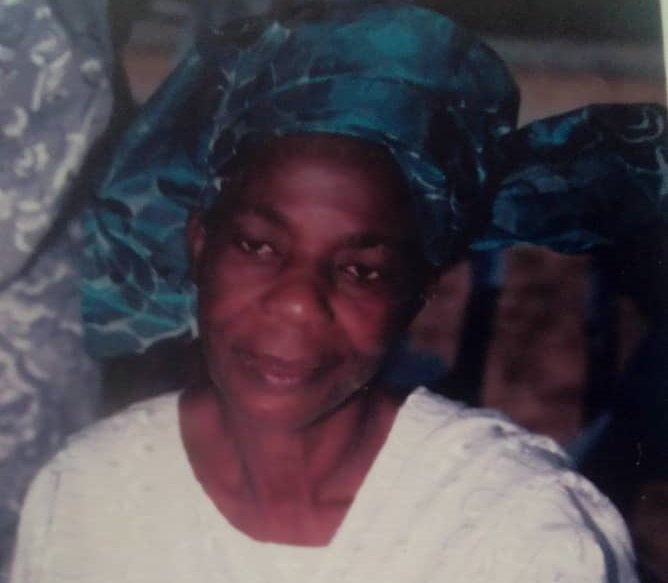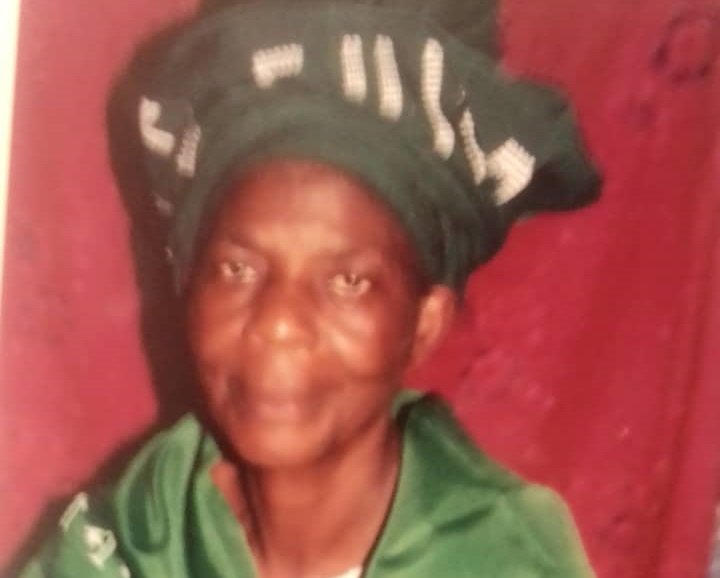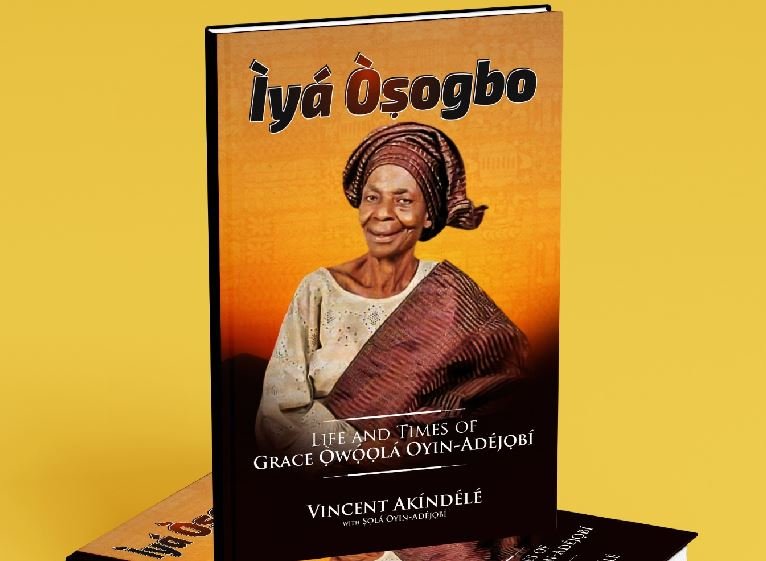Though it appears like any biography in its structure and presentation, it is unequivocally an uncommon work of art with unique features and touches. It is unique in quite several ways: It is carefully and consciously written to satisfy both the English and Yoruba-speaking fans of the subject. The Yoruba texts are presented in a comprehensible way with the use of the Yoruba diacritic, that is, the Yoruba tone marks and sub-dots. Another unique feature is the question and answer part of the book which is translated to Yoruba and tucked in the appendix.
There are 17 chapters all together in presenting the life and times of the legendary actress, Mama Grace Owoola Oyin-Adejobi who is better known as Iya Osogbo with the last chapter as a tribute to the subject as contributed by her children, colleagues, and contemporaries. Chapter one is an exposition on the Yoruba belief and culture of child christening which is titled, ‘What a name!’ The author treats the concept of grace being her first name and the middle name, Owoola as wielding great influence on her life.
He notes that it is by God’s grace that she has triumphed over several trials; to accommodate and tolerate insults and attacks from her co-wives as a sacrifice for the success and happiness of her husband and family.
According to the author, it takes God’s grace that Iya Osogbo has lived long to be 93 years of age in a country where life expectancy is 55 years; and her middle name, Ọwọọla, gives the aura that attracts fortune, fame, and favour her eventful and fruitful life.
In Chapter Two, the author leads readers to the birth and ancestry of Iya Osogbo who was born on August 23, 1930, to the family of Pa John Okebiyi and Mrs. Deborah Ọlabisi Okebiyi at Isalẹ Ọṣun of a royal lineage of Òṣogbo as the third of her father’s children and the second of her mother’s five children. Her father was an educated and a building contractor who had three wives with her mother as the second.

Chapter Three gives the account of the excitement of the family when she started primary education at All Saints’ Anglican Primary School, Balogun Agoro, Ile-Abodua, Oluọde, Òṣogbo, Ọṣun State in 1941 after she scaled through the hurdle of stretching her right hand over the head to touch the left ear at a time when qualification for admission into primary school was by stature, not age. Sadly, in 1948, Iya Osogbo was expelled for non-payment of school fees as her mother stopped paying her school fees after she was negatively influenced by her friends and used the money her mother sent for school fees to buy clothes. That was the mistake that led to the termination of her educational pursuits.
Chapter Four captures the trying times of Mama after she dropped out of school while working to make ends meet and how she chose to train as a skilled professional by enrolling as an apprentice at Mrs. Clegg’s fashion/cloth-making outfit in Òṣogbo to become a seamstress. Chapter Five details the deal of the life partnership between Pa Oyin Adejobi and Mama.

The author considers the acceptance of the marriage proposal of Prince Adéjọbí by Mama as answering a divine call to partner with the young man to fulfill God’s purpose in his chosen career and entire life out of genuine love which is equally viewed as an act of showing kindness and compassion to a specially ‘able person’. In chapter six, Mama Oyin-Adéjọbí is presented as a virtuous woman who without noticeable friction combined three roles as a wife, mother, and an actress.
Chapter Seven is devoted to the life and times of her husband, Oyin Adejobi whom Mama hysterically and hilariously refers to as ‘Baba wa’- our father and possessively claimed, ‘ọkọ mi’ – my husband, even though she had other four co-wives. Chapter Eight shows the reason she is known and addressed as Iya Osogbo while chapter Nine chronicles her exploits in her acting career.
Chapter Ten further reveals that the making of Ìyá Òṣogbo was divinely facilitated by Oyin Adéjọbí Theatre Company which was founded by her darling husband. Chapter eleven discusses some plays which were produced and performed by the Oyin Adéjọbí Theatre Company.
Chapter Twelve showcases the songs which the Oyin Adéjọbí Theatre Company appropriately used to spice up its plays. Chapter Thirteen lists the awards Iya Osogbo received from different organisations in recognition of her uniqueness, dexterity, and prodigy in acting. Chapter Fourteen portrays Mama as having a life guided by God’s law while on a related note, chapter fifteen reports that at her ripe age, Mama now yearns for heaven’s attention as she has stopped starring in secular plays, videos, and films, rather, she has opted to be “acting for God” to gain heaven’s attention as she has had enough of the world’s attention and recognition.
Chapter Sixteen aptly titled, ‘Face-to-face with Ìyá Òṣogbo, presents excerpts of the interview session to readers so that they may have a one-on-one interaction with Mama and Chapter Seventeen contains a tribute to her as contributed by her children.
It is symbolically significant that the Foreword to the book was written by a female fan of Iya Osogbo, Dr. Ruth Ọmọtọla Ọnasanya, a lecturer at Federal College of Agriculture, Moor Plantation, Ibadan, Oyo State, Nigeria. She states, “I watched some of the Oyin-Adéjọbí’s TV drama series while growing up. I remember Mama’s roles in Kóòtù Aṣípa, Orogún Adédigba, Oyin Mọmọ, Ilé Ìwòsàn and I loved to listen to the group’s songs with baba’s unique baritone voice.” Her assertion becomes a compelling attestation as Iya Osogbo adds, “interestingly, some of the songs are carefully packaged in this book.”
The book, no doubt, is a good biography written in simple and lucid language. The author’s versatility and multifarious background as a media practitioner and scholar, a playwright, a poet, a storyteller, and a journalist reflect all through the pages. It contains the three major literary genres: prose, drama, and poetry.
It is competently crafted in engaging prose; the poet in the author is shown in the generous use of praise poetry (oriki) in the stories of the Oyin Adejobi family and the ancient city of Osogbo; some of the plays and songs of the Oyin Adejobi Theatre Party are skillfully put in dialogues making it pleasantly chatty and conversational. The interview session with Iya Osogbo enables readers to see her speak, giving an interactive effect. The use of biblical allusion, proverbs, and idioms embellishes the book.
However, the book is not without its peculiar shortcomings which should be corrected in the second edition. It is not indexed and some Yoruba letters are left without the diacritic: Yoruba tone marks and sub-dots.
That aside, the book is a diligently written account of the life and times of a legendary actress, Mama Grace Owoola alias Iya Osogbo and her husband, the late Oyin Adejobi. It is a compulsory read for all lovers of good books. Students, researchers, lecturers, theatre practitioners, and songwriters will find the book useful as a veritable material for scholarship and practice.











